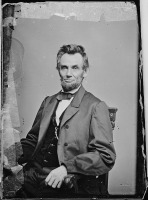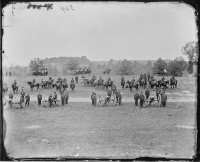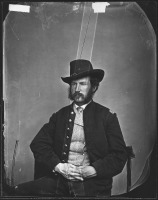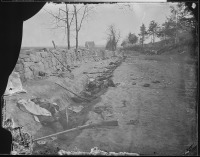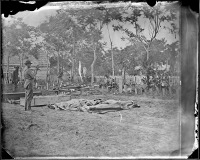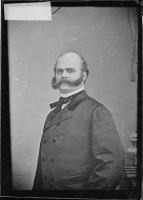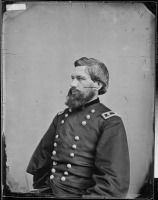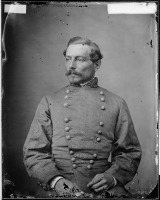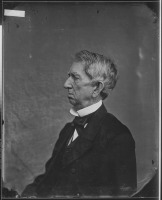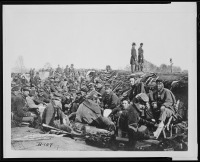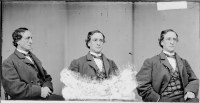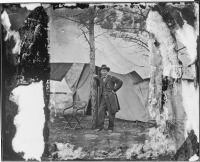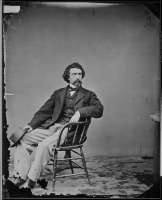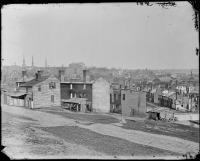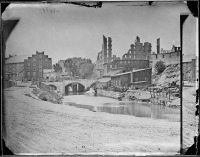|
The photographs in this collection are from the Records of the Office of the Chief Signal Officer, Record Group 111, and Records of the War Department General and Special Staffs, Record Group 165, held at the Still Picture Branch of the National Archives and Records Administration (NARA). The images include photographs from the Matthew B. Brady collection, purchased for $27,840 by the War Department in 1874 and 1875, photographs from the Quartermaster's Department of the Corps of Engineers, and photographs private citizens donated to the War Department. These collections were once part of the War Department Library.
This collection consists of 6,050 images from glass plates (and modern derivative copies including prints, duplicate negatives, and interpositives) which were produced by the photographer Mathew Brady and his associates at the Brady Studios. Many images show battlefields, camps, towns, and people touched by the Civil War. Photographs capture camp life, routines, war preparations, the moments just prior to battle, and the aftermath of battle. Also of interest in this series are views of Union and Confederate naval vessels, railroads, supply dumps, and hospitals.
The most well-known individual associated with Civil War photography is Mathew B. Brady (1823-1896). This is in spite of the fact that Brady may have only personally taken a few photographs of the war. Brady employed many of the other well-known photographers before and at points during the war. Alexander Gardner and James F. Gibson at different times managed Brady's Washington studio. Timothy O'Sullivan, James Gardner, and Egbert Guy Fox were also employed by Brady during the Civil War.
Brady was one of the earliest practitioners of daguerreotype in the United States and soon became a prolific portrait photographer. In his New York and Washington, DC studios, he and his assistants photographed many of the luminaries of the 1850s and 1860s. With the outbreak of the Civil War in 1861, Brady endeavored to record the progress of the war with his camera. He and his associates, notably Alexander Gardner, George Barnard, and Timothy O'Sullivan, traveled throughout the eastern part of the country and photographed many of the battlefields, towns, and people touched by the war. In addition, Brady photographed many of the distinguished political and military personalities who found time to stop by his Washington, DC studio. The result was a collection of some 12,000 images which comprised a rich visual document of the Civil War period.
The Brady Studio photographed and made portraits of many senior Union officers in the war, including Ulysses S. Grant, Nathaniel Banks, Don Carlos Buell, Ambrose Burnside, Benjamin Butler, Joshua Chamberlain, George Custer, David Farragut, John Gibbon, Winfield Hancock, Samuel P. Heintzelman, Joseph Hooker, Oliver Howard, David Hunter, John A. Logan, Irvin McDowell, George McClellan, James McPherson, George Meade, Montgomery C. Meigs, David Dixon Porter, William Rosecrans, John Schofield, William Sherman, Daniel Sickles, Henry Warner Slocum, George Stoneman, Edwin V. Sumner, George Thomas, Emory Upton, James Wadsworth, and Lew Wallace.
On the Confederate side, Brady photographed Jefferson Davis, P. G. T. Beauregard, Stonewall Jackson, James Longstreet, Lord Lyons, James Henry Hammond, and Robert E. Lee (Lee's first session with Brady was in 1845 as a lieutenant colonel in the U.S. Army, his final after the war in Richmond, Virginia).
After the Civil War, business for Brady's studios gradually declined. Many negatives were lost due to neglect and disinterest in the years after the war. Ken Burns in his 1990 documentary on the Civil War claimed that glass plate negatives were often sold to gardeners, not for their images, but for the glass itself to be used in greenhouses and cold frames. As Burns said in his 1993 commencement address at the University of Delaware, "In the years that followed the end of the war, the sun slowly burned away their filmy images and they were lost."
In July 1874 Secretary of War William Belknap purchased part of Brady's collection of negatives, approximately 2,250 plates, at public auction for $2,500 because of Brady's bankruptcy. In April 1875, the War Department purchased 3,735 plates directly from Brady under express Congressional authorization to "acquire a full and perfect title to secure and purchase the remainder now in possession of the artists [for] $25,000." The plates languished in the War Department's War Records Office until 1886 when they were transferred to the Supply Division. In 1888 the collection was transferred to the War Department Library. In 1921 the Office of the Chief Signal Officer secured custody of the collection in order to make duplicate prints and provide copies to the public. The collection was accessioned to the National Archives in 1940.
Finding Aid
In addition to the 6,050 pages above, included in this collection is a 1,043 page finding aid that includes a thumbnail of each photo and list each photo's title/description and identification numbers.
|

